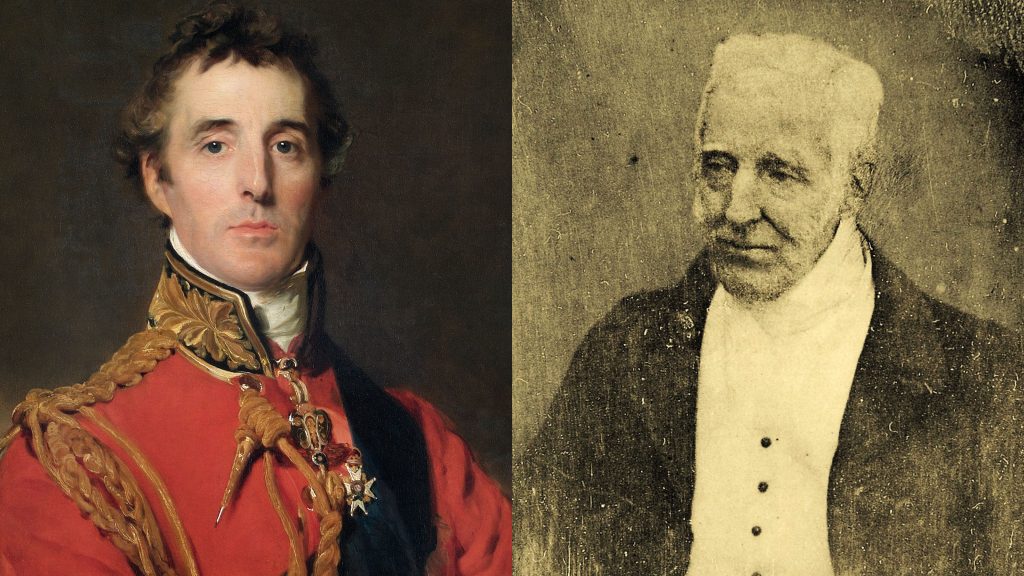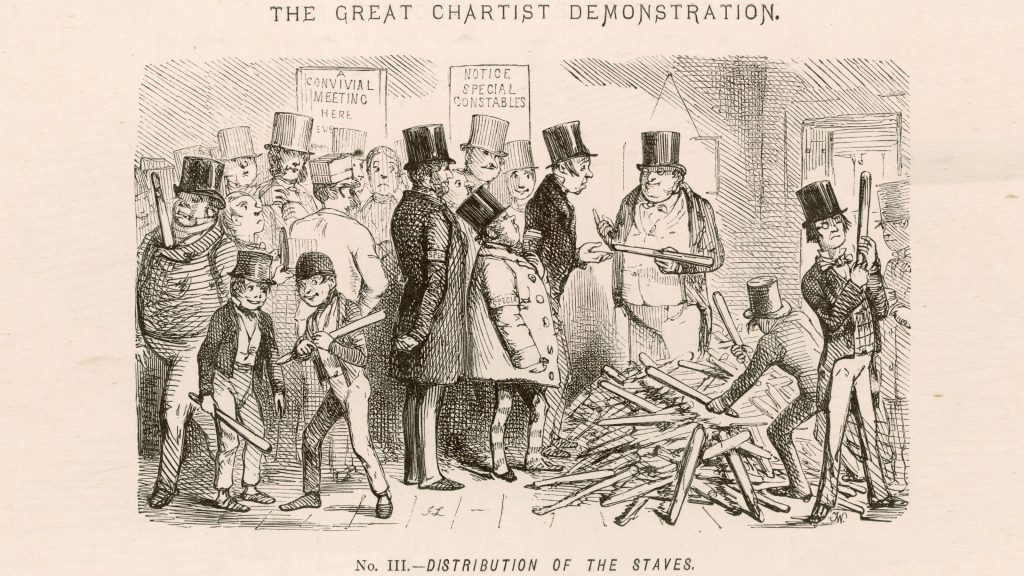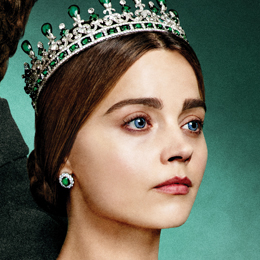History in Images: Victoria Episode 2
As protestors storm the palace gates and instability reigns throughout Europe, Queen Victoria is in labor. Will she remain in London with her people or flee to safety with her family? Peruse the images below for a window into the real history behind the events of episode 2.
- 1.
Childbirth for Queen Victoria


The four daughters of Queen Victoria, etching (The four daughters of Queen Victoria – Etching)
In Episode 2, as Queen Victoria labors through the delivery of her 6th child, her oldest son Bertie earnestly prays for her survival.
In 1848, childbirth was still a perilous and painful business, even for a queen. With little understanding of how germs spread—Louis Pasteur’s “Germ Theory” was still 13 years away—the danger of infection was high. Complications were often fatal and pain relief practically nonexistent, but things were about to change.
A 36-year-old Scottish Obstetrician, James Young Simpson had, just the year before, accomplished the successful administration of ether during a labor and delivery, but had since discovered chloroform to be a safer and more effective anesthesia.
Victoria and Albert had been informed of Dr. Simpson’s chloroform discovery, but the royal medical team deemed it too risky for her upcoming birth. It was soon to be common practice during childbirth, and Victoria herself was said to be very pleased with the experience during later labor and deliveries.
- 2.
Princess Louise Caroline Alberta


Princess Louisa Caroline Alberta, born March 18, 1848. (left: An 1852 portrait of Princess Louise, inscribed and dated ‘Victoria/after Winterhalter/1851’ and with the inscription ‘H.R.H. P’cess Louise, copied by Queen Victoria | right: Princess Louisa, at age 33.)
Queen Victoria’s half-sister Feodora appears slighted, in Episode 2, when Victoria and Albert don’t name their newborn baby after her. They choose instead to christen their sixth child after Albert’s late mother, Louise of Saxe-Gotha-Altenburg.
Victoria and Albert’s fourth daughter, Louisa Caroline Alberta, or “Louise,” was born on March 18, 1848, as revolutions were sweeping across Europe. Queen Victoria wrote in her journal, “She was born in the most eventful times, and ought to be something peculiar in consequence.” (Queen Victoria’s Journal, Sunday March 18, 1848). She was said to be the most spirited and inquisitive of the royal children, earning the nickname “Little Miss Why” from her family.
From an early age, Louise showed great talent in drawing and dancing. She caused a stir when she defied Royal protocol to marry a commoner, John Campbell, the Marquess of Lorne, heir to the 8th Duke of Argyll. Louise trained as a sculptor and, throughout her life, was a strong supporter of the arts, higher education, and the feminist cause.
- 3.
Arthur Wellesley, 1st Duke of Wellington


left: The Duke of Wellington circa 18-15-16 | right: circa 1844, aged 74-75 (left: The Duke of Wellington circa 18-15-16 | right: circa 1844, aged 74-75)
Episode 2 shows the indomitable Duke of Wellington once again leading the troops, this time in an effort to quell the looming Chartist uprising. Despite his 79 years of age, he still cuts a robust figure in military regalia.
One of the more decorated British military heroes of all time, The Duke of Wellington is perhaps most celebrated for defeating Napoleon Bonaparte in the 1815 Battle of Waterloo. His impressive resumé also contains some notable contributions to British politics, including two stints as Prime Minister.
Wellington retired from political life in 1846, but being the Commander in Chief of the British Army–a position he retained until his death–he was called on, in 1848, to help safeguard London from potential Chartist violence.
- 4.
The Great Chartist Demonstration


The Great Chartist Demonstration Distribution of the Staves special constables prepare for trouble by handing out truncheons (The Great Chartist Demonstration: Distribution of the Staves. Special constables prepare for trouble by handing out truncheons, 1848.)
The big moment for the Chartists comes in Episode 2, when they march en masse toward the houses of parliament, where they plan to present their petition.
The Chartist movement was intent on remaining non-violent, even ahead of the huge demonstration they had planned for April 10, 1848. Regardless, the authorities decided that mounting a large-scale opposition as a deterrent was important.
The Duke of Wellington was put in charge of organizing a military resistance that was ready to intervene if the protesters tried to cross the Thames. The police, meanwhile, recruited 100,000 constables for the force.
Despite it all, the Chartists march was peaceful, and the petition was delivered to parliament. Accounts of the number of signatures on the petition vary from 1.9 to 6 million, depending on who you ask, but in any case it was rejected.




















